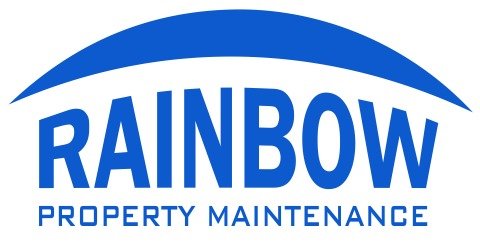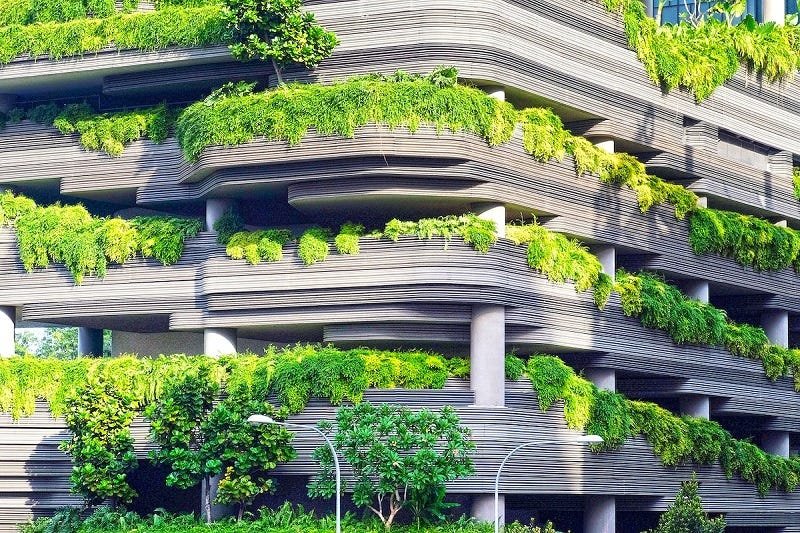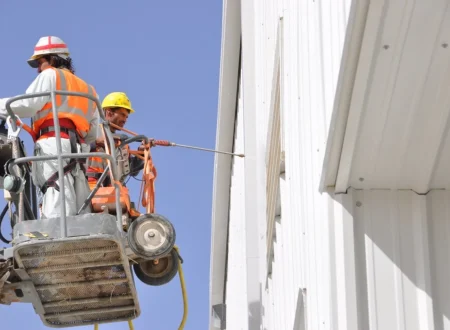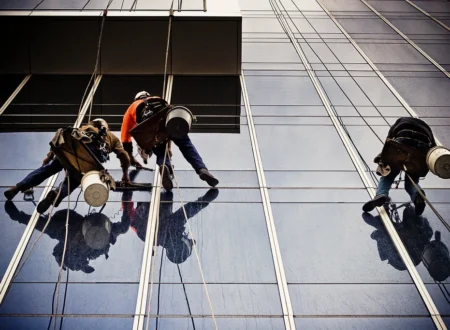Best Practices for Sustainable Commercial Facility Maintenance
In today’s eco-conscious business climate, sustainable maintenance practices are not just a trend but a necessity.
Commercial facilities are at the forefront of implementing green strategies for a healthier planet.
Adopting sustainable maintenance practices offers a myriad of benefits, including reducing environmental footprints, saving costs, and enhancing the facility’s image.
Key Takeaways:
- Sustainability is a cost-effective strategy for long-term savings.
- Green practices in facility maintenance enhance corporate reputation.
- Effective sustainable maintenance ensures regulatory compliance and reduces environmental impact.
- Adopting eco-friendly solutions can significantly improve workspace health and employee productivity.
- Technology and innovation play a crucial role in sustainable facility maintenance.
Understanding the Basics of Sustainable Maintenance
Sustainability in the commercial arena is more than a buzzword; it’s a commitment to future-proofing your operations. For us in the property maintenance sector, it’s about shifting gears towards practices that safeguard our planet while boosting operational efficiency. Let’s break down the essentials of sustainable maintenance, why it’s imperative for contemporary commercial facilities, and how it intersects with broader business objectives.
The Critical Role of Sustainability in Today’s Commercial Landscape
In an era where ecological concerns are front and center, sustainable facility maintenance emerges as a key player. This approach isn’t just about being green for the sake of appearances; it directly contributes to cost savings, reduces environmental impacts, and aligns with growing consumer demands for responsible business practices. A commercial facility that prioritizes sustainable methods not only stands to benefit financially but also enhances its standing in an increasingly eco-conscious market.
Core Principles of Sustainable Facility Maintenance
The foundation of sustainable facility care lies in several core principles: efficiency, minimization of waste, and conscientious resource management. These principles drive the selection of energy-efficient systems, non-toxic cleaning materials, and procedures that minimize water usage and waste production. By adopting such measures, facilities can drastically reduce their carbon footprint while maintaining, or even enhancing, their operational effectiveness.
Aligning Sustainability Goals with Business Objectives
The beauty of integrating sustainability into facility maintenance lies in its synergy with broader business goals. Companies are finding that their environmental strategies significantly boost their brand image, resonate with values-driven consumers, and can even be a deciding factor in securing business deals. Furthermore, adopting green practices may uncover financial incentives, such as tax breaks or reduced utility bills, contributing to the overall profitability of the enterprise.
In essence, sustainable maintenance represents a strategic alignment between doing what’s right for the planet and what’s beneficial for business. It transcends mere compliance or marketing trends, embedding itself into the very fabric of modern business operations. As we continue to champion green initiatives, our commitment to sustainable practices not only reflects our care for the environment but also showcases our adaptability and foresight in an evolving commercial landscape.
Embracing sustainable maintenance is a bold step towards a prosperous and responsible future. Let’s progress together towards sustainability. Discover how our approach makes a difference with our professional cleaning services, sculpted for the environmentally conscious business.
Strategies for Implementing Green Maintenance Practices
In the voyage towards sustainability, green maintenance practices are a beacon for commercial facilities wanting to make real change. Adapting to eco-friendly practices isn’t about jumping on a bandwagon; it’s an actionable plan for businesses aiming to cut down on their environmental impacts while fostering a healthy workplace. Let’s explore how implementing certain strategies can set the foundation for a greener future.
Evaluating and Choosing Eco-Friendly Cleaning Products
Selecting eco-friendly cleaning products is the first step in our journey. This means scrutinizing products for harmful chemicals and opting for alternatives that are safe for both the environment and human health. It’s a balance between effectiveness and eco-consciousness. By transitioning to green cleaning agents, facilities can significantly decrease their chemical footprint, proving that small changes in ingredients can lead to substantial environmental benefits.
Integrating Energy-Efficient Systems and Technology
The heart of green maintenance also beats in the operational systems we choose. Incorporating energy-efficient systems and adopting cutting-edge technology reduce power consumption and greenhouse gas emissions. Whether it’s LED lighting, solar panels, or smart HVAC systems, the aim is to maximize efficiency and minimize energy wastage. This not only aligns with sustainability goals but often results in decreased utility costs.
Waste Reduction and Recycling Initiatives in Facility Management
Finally, no conversation on green maintenance strategies is complete without addressing waste management. Initiating strong recycling programs and waste reduction plans are crucial. This can range from simple actions like increasing recycling bins to more intricate measures such as composting organic waste or donating unused materials. Encouraging these practices amongst staff and tenants solidifies a culture of sustainability within the facility.
Implementing these strategies paves the way for commercial properties to contribute to a sustainable future actively. By choosing safer cleaning products, leveraging technology for efficiency, and minimizing waste, facilities can lead by example in the march towards environmental stewardship. Discover how we embody green initiatives in our cleaning solutions by exploring our professional cleaning services, tailored for the eco-conscious business.
Cost-Benefit Analysis of Sustainable Maintenance
When diving into sustainable upkeep, it’s vital to weigh the initial investment against the payoff down the road. This balance sheet of eco-friendly practices isn’t just about numbers but a reflection of value for both businesses and the environment.
The Economics of Green Choices
The sticker shock of green technologies and practices can deter some. However, this upfront cost is a gateway to substantial long-term savings. For instance, energy-efficient lighting and HVAC systems might require a significant upfront investment, but the reduction in utility bills over time is undeniable. Furthermore, using eco-friendly cleaning products may seem minor, but it leads to healthier indoor environments, reducing sick days, and increasing productivity among employees.
Echoes of Success in Sustainable Business Practices
Numerous businesses have reaped the rewards of these green investments. Retail giants to small startups have documented notable reductions in operational costs and carbon footprints, serving as a beacon for the industry. These success stories are not just anecdotes but data-driven confirmations that sustainable maintenance is both feasible and financially prudent.
Incentives for Greener Facilities
Governments worldwide are recognizing and rewarding the shift towards sustainability with various incentives. Tax credits, rebates for energy-efficient upgrades, and subsidies for renewable energy installations are just a few ways that policymakers are supporting eco-friendly facility upgrades. These incentives further tilt the scales in favor of adopting sustainable practices, ensuring that the choice to go green is as economically viable as it is ecologically responsible.
In the grand scheme of facility management, the journey towards sustainability is marked by upfront challenges but promises enduring rewards. By comparing the immediate costs with the long-term savings, tapping into success stories for inspiration, and leveraging government incentives, commercial facilities can confidently navigate the pathway to sustainability. Learn how our commitment to green practices aligns with these goals by exploring our professional cleaning services, crafted for the eco-conscious business.
Technology’s Role in Sustainable Commercial Facility Upkeep
The intersection of technology and sustainability is redefining the landscape of commercial facility maintenance. Embracing innovative solutions is pivotal in navigating the path toward environmental sustainability.
Innovative Maintenance Technologies for Environmental Sustainability
Advanced technologies, from energy management systems to IoT-enabled devices, are the linchpins in the strategy for green maintenance. These tools offer unparalleled precision in monitoring resource use, identifying inefficiencies, and implementing immediate corrections. This technological prowess not only conserves resources but also paves the way for a reduced carbon footprint.
The Impact of Smart Buildings and Automation on Maintenance Practices
Smart buildings leverage automation to optimize operations, reduce waste, and save energy. Automated systems can control lighting, heating, and air conditioning, adjusting according to occupancy and time of day. This level of automation extends the lifespan of facilities while concurrently slashing energy consumption and costs.
Case Studies of Technology-Driven Sustainable Maintenance
Real-world examples abound of commercial entities harnessing tech innovations for sustainability. From retrofitting buildings with sensor-driven plumbing fixtures that save water to employing robotic cleaners for efficient use of cleaning chemicals, the effect is profound. These cases prove the feasibility and economic soundness of integrating technology into maintenance practices.
Adopting technology in facility upkeep not only aids in fulfilling sustainability objectives but also introduces operational efficiencies and cost savings. Explore how we integrate these technologies into our methods by visiting our project-based cleaning page, which showcases our commitment to sustainability and innovation in commercial maintenance.
Achieving LEED Certification for Commercial Buildings
The pursuit of LEED certification has become a hallmark for commercial buildings committed to sustainability. Understanding the certification process, the role of maintenance in achieving LEED status, and the myriad benefits it brings can guide facilities toward greener practices and recognition.
Understanding the LEED Certification Process
LEED, or Leadership in Energy and Environmental Design, is a globally recognized symbol of sustainability achievement. The certification process evaluates buildings across various sustainability metrics, including energy use, water efficiency, CO2 emissions, indoor environmental quality, and stewardship of resources. Achieving certification requires meticulous planning and a commitment to sustainable facility upkeep strategies.
The Role of Sustainable Maintenance in Achieving and Maintaining LEED Status
Sustainable maintenance practices are key to not only achieving but maintaining LEED certification. Regular audits, the adoption of energy-efficient systems, water conservation measures, and the use of eco-friendly cleaning products contribute significantly to a building’s LEED score. Additionally, ongoing education and training for maintenance staff ensure practices remain aligned with LEED standards.
Benefits of LEED Certification for Facility Owners and Managers
The advantages of LEED certification extend well beyond the environmental impact. Certified buildings often see reduced operating costs due to greater efficiency, enhanced building marketability, increased occupancy rates, and potentially higher rental rates. Furthermore, LEED certification demonstrates a commitment to environmental stewardship and social responsibility, enhancing a company’s image.
In sum, LEED certification represents a strategic asset for commercial facilities, offering a competitive edge in the market while contributing to a sustainable future. Explore how our dedication to green maintenance can support your LEED certification goals by visiting our specialized services page, showcasing our commitment to sustainable facility management.
Conclusions
In the landscape of today’s eco-conscious business climate, adopting sustainable maintenance practices is far from a mere trend—it’s a decisive step towards ensuring a healthier planet and a robust bottom line. Our journey through the best practices for sustainable commercial facility maintenance highlights not just an ethical commitment to environmental stewardship but also unveils a strategic pathway to operational efficiencies and cost savings. From the foundational understanding of sustainability in the commercial sphere to practical strategies for green maintenance, the essence of sustainable practice lies in its integration into every facet of facility upkeep. The discussions pivot from evaluating eco-friendly cleaning products and integrating energy-efficient systems to managing waste and recycling initiatives, laying the groundwork for facilities eager to champion eco-friendly practices. The cost-benefit analysis reveals an undeniable truth: the initial investment in green practices pays dividends far beyond monetary savings, impacting workplace health and opening avenues for government incentives. Technological advancements further amplify the efficacy of sustainable maintenance, with innovations in smart buildings and automation offering a clear route to decreased environmental impact and enhanced facility management. Achieving LEED certification emerges not just as a badge of honor but as a tangible reflection of a facility’s commitment to sustainability. It stands as a testament to the deep-seated advantages of adopting and maintaining stringent sustainability benchmarks, offering a beacon for businesses aiming to position themselves at the forefront of ecological responsibility.As we stand on the cusp of a more sustainable future, Rainbow Property Maintenance extends an invitation to commercial facilities nationwide: Embark on your journey towards sustainability and consider the long-term advantages of implementing green maintenance practices in your facility today. Whether it’s through exploring our professional cleaning services, learning how our sustainable disinfection services can benefit your facility, or exploring our project-based cleaning for your next green initiative, we’re here to guide and support your sustainable transition. Together, let’s contribute to a healthier planet and a sustainable future for all.
Frequently Asked Questions (FAQ):
What are the first steps towards sustainable maintenance for a commercial facility?
Conducting an environmental audit and setting measurable sustainability goals are crucial first steps.
Can small commercial facilities also implement sustainable practices?
Absolutely, sustainability is scalable and can be effectively implemented regardless of the facility size.
Does sustainable maintenance present a higher upfront cost?
While some green initiatives require initial investment, they often lead to significant long-term savings.
How does sustainable maintenance impact employee well-being?
Eco-friendly practices improve indoor air quality and create a healthier work environment, boosting productivity and morale.












